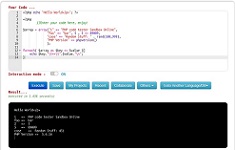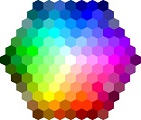CSS Introduction Tutorial
How do cascading style sheets work?
The CSS style sheets are a set of rules that are listed in a .css file and that describe what the different HTML elements of a page should look like.The interesting thing about this is that they work with a philosophy of patterns or templates, that is, it is not necessary to specify each of the elements, but you can define rules like these two:
"Level 1 and 2 titles must be black and have a font size of 16 and 14 pixels respectively."
"The text of the paragraphs are aligned to the left, have a font size of 12 pixels and a dark gray color."
As a comparison, if you master the use of styles in Microsoft Word, you will see that this is very similar to the concept of style in Word, although CSS is infinitely more powerful than Word in all its possibilities.
CSS Tutorial example Let's see a concrete example of how the previous rules would be expressed in the language of the CSS:
<style>
body {
background-color: lightblue;
}
h1, h2 {
color: black;
font-size: 16px;
}
h2 {
font-size: 14px;
}
p {
color: rgb(32,32,32);
text-align: left;
}
</style>
body {
background-color: lightblue;
}
h1, h2 {
color: black;
font-size: 16px;
}
h2 {
font-size: 14px;
}
p {
color: rgb(32,32,32);
text-align: left;
}
</style>
Basic properties of CSS you should know
1. Basic layout
width: Width of an element.
height: Height of an element.
vertical-align: Vertical alignment within an element.
margin: Space that is added between the element and its neighbors. You can differentiate by side (up, down, left, right).
padding: Inner fill that is added at the edges of the margin. Unlike margin, it counts for the size of the element.
float: Move the element as far as possible to the indicated side. This property is used in CSS floating positioning.
The issue of positioning in CSS is not trivial and it is convenient to study how it works before using this property.
2. Sources and text
font-family: Typeface
font-size: Font size
font-weight: Weight (normal, bold, ...)
font-style: Style (normal, italic, ...)
text-decoration: "Decorations" as underline, strikethrough, etc.
text-align: Aligning the text (left, right, etc.)
text-transform: Show a text in uppercase, lowercase or the first letter of each word in uppercase.
3. Color and backgrounds
color: Color of the element. It can be specified in different formats as predefined words (network, green, etc.) RGB or as a hexadecimal value.
background-color: Background color of the element.
background-image: Allows you to specify a background image.
background-repeat: Allows you to use an image as a mosaic in different modalities.
box-shadow: Create a shadow effect for an element.
4. Lists
list-style-image: Use the image specified as a bullet for the list.
list-style-type: Different styles of bullets and numbering styles for list items.
5. Borders
border: Add a border to an element and set some properties (thickness, line style, etc.)
border-color: Edge color.
border-style: Different styles for the edge (solid, points, etc.)
border-radius: Allows you to create rounded corners for an element.
1. Basic layout
width: Width of an element.
height: Height of an element.
vertical-align: Vertical alignment within an element.
margin: Space that is added between the element and its neighbors. You can differentiate by side (up, down, left, right).
padding: Inner fill that is added at the edges of the margin. Unlike margin, it counts for the size of the element.
float: Move the element as far as possible to the indicated side. This property is used in CSS floating positioning.
The issue of positioning in CSS is not trivial and it is convenient to study how it works before using this property.
2. Sources and text
font-family: Typeface
font-size: Font size
font-weight: Weight (normal, bold, ...)
font-style: Style (normal, italic, ...)
text-decoration: "Decorations" as underline, strikethrough, etc.
text-align: Aligning the text (left, right, etc.)
text-transform: Show a text in uppercase, lowercase or the first letter of each word in uppercase.
3. Color and backgrounds
color: Color of the element. It can be specified in different formats as predefined words (network, green, etc.) RGB or as a hexadecimal value.
background-color: Background color of the element.
background-image: Allows you to specify a background image.
background-repeat: Allows you to use an image as a mosaic in different modalities.
box-shadow: Create a shadow effect for an element.
4. Lists
list-style-image: Use the image specified as a bullet for the list.
list-style-type: Different styles of bullets and numbering styles for list items.
5. Borders
border: Add a border to an element and set some properties (thickness, line style, etc.)
border-color: Edge color.
border-style: Different styles for the edge (solid, points, etc.)
border-radius: Allows you to create rounded corners for an element.
CSS Tutorial, CSS example, CSS online courses
CSS Introduction Tutorial - css tutorial
Online Editor
This tool makes it easy to create, adjust, and experiment with custom colors for the web.
HTML Templates
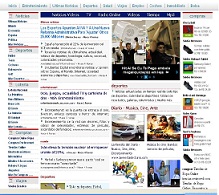
Magnews2 is a modern and creative free magazine and news website template that will help you kick off your online project in style.
CSS HTML Layout
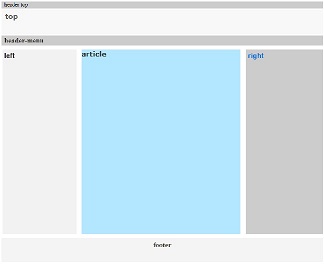
Find here examples of creative and unique website layouts.
Free CSS HTML Menu
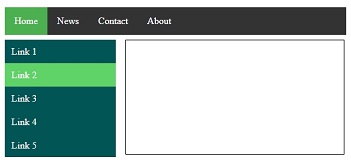
Find here examples of creative and unique website CSS HTML menu.
